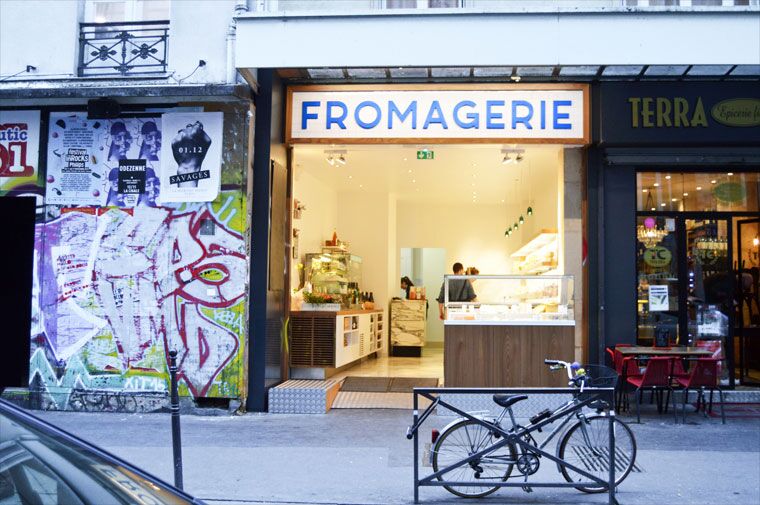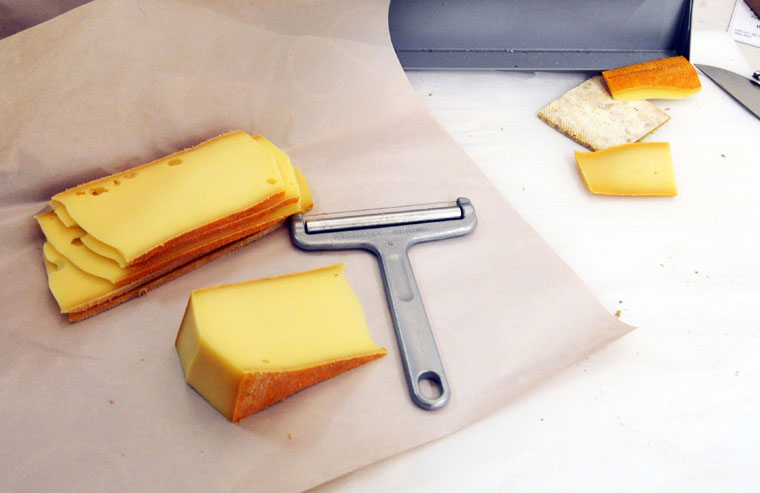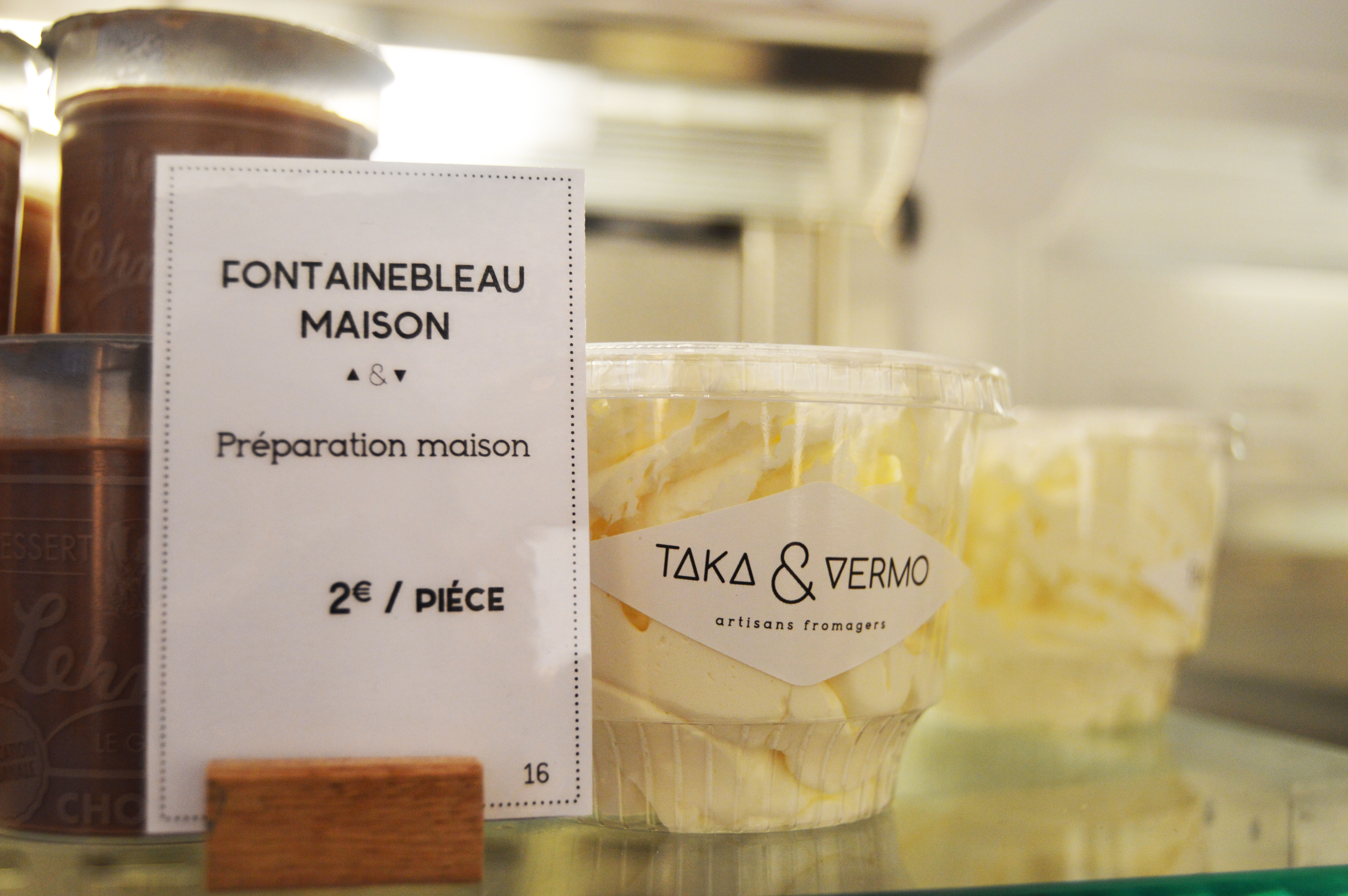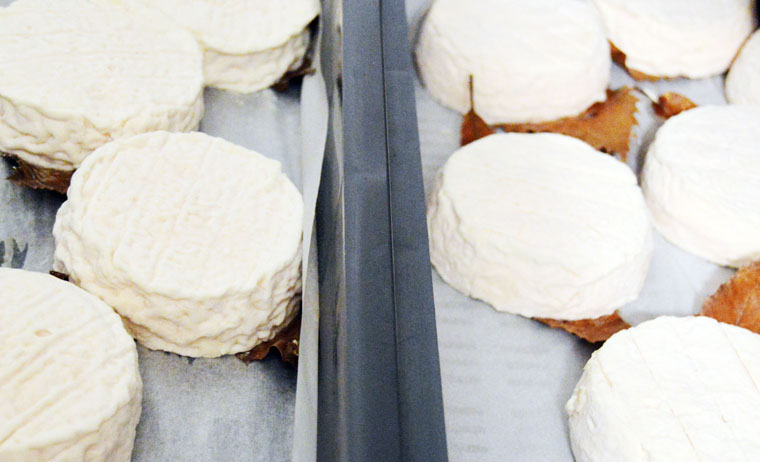Before I begin, I want to take a minute to thank everyone for checking in on me and for all your kind notes. This month has been hard and surreal for the entire Paris community, and I have been so touched by all the friends sending me global support for Paris and words of encouragement. I have found great comfort in the Paris city motto, Fluctuat nec mergitur, meaning tossed but not sunk, and have been struggling to find the right words to express how this has affected me. Most of my thoughts have been posted stream-of-consciousness style on Instagram, which you can see here. And, my favorite article that has been posted thus far can be read here. ♥
I began an internship that I love last month with the fabulous Clotilde from Chocolate & Zucchini (if you don’t already follow her you should!), for whom I got to go on a tour of a new fromagerie (cheese shop) on my street. Check out the how-to guide on C&Z for cheese shopping like a Parisian 🙂

I am notorious for walking into fromageries and buying waayyy more cheese than I can possibly eat myself, which means I generally try to avoid them. (Except goat cheese. I could eat all the goat cheese in the world.) Regardless, l’affinage – the art of cheese – is one of my favorite French words and standing in Taka & Vermo, learning all about the cheese and origins and how to shop, I realized I don’t shop at fromageries enough.
Laure and Mathieu, the artisan fromagers at Taka & Vermo, were amazing in showing me around their shop. If you ever find yourself in Paris on rue du Faubourg Saint Denis, I highly recommend paying them a visit (they speak English and will vacuum pack your cheese…wink wink).
Taka & Vermo opened in October, yet already has a strong following. Before opening, they had a crowd funding campaign on Kiss Kiss Bank Bank that funded their “cave d’affinage” (more on that later!) and became talk of the street as soon as their stylized sign went up.

Laure taught me the perfect ratio for a cheese plate – always odd numbers, a variety of cheese families, and various soft/semi-hard/hard cheeses – and showed me their cave in the basement where the cheese is left to get creamy *swoon*. Their “cave” is actually much more high-tech than a traditional one (those are more similar to a wine cellar cave). It keeps the cheese at 99 percent humidity all the time, but inside it just feels like there is a humidifier on (i.e., my hair didn’t go afro style while I was in there, thank God).
Before opening Taka & Vermo, Laure and Mathieu visited many, many farms across France and in neighboring countries to find the cheese they wanted to sell (there are pictures on their Facebook page if you are interested). As such, Laure pointed to cheese after cheese telling me about what farm it came from and how they made connections with the farmers, as a few are neighbors themselves. They knew one farmer who made goat cheese, who then told them that he had a neighbor who had sheep (brébis) and another neighbor who had cows (vâche). Now, they are all suppliers.
That is one of the culinary aspects of France that I love and can’t adjust to in America – everything was labeled with the farm name and region and was really, truly fresh.

Fontainebleau is a traditional creamy product found in fromageries, though often now it is hard to find. They can be eaten like yogurt with honey, or with herbs added in as a dip. Taka & Vermo makes theirs in small batches, because it doesn’t last very long once it’s made!
Cheese in France is seasonal, just like produce. There are some cheeses you can get year round, some that you can only get in certain months, and some that are simply best in certain seasons. Right now (Oct.-March), Mont d’Or is available from the Franche-Comté region, where Comté is also from (cheese, like wine, is often named after regions in France). Mont d’Or is so creamy it can be described as oozy, and must be contained by a strip of wood in the box. Laure said she can just eat it with a spoon or pop it in the oven for a bit, while Clotilde told me that her trick is to cut a circle in the cheese and pour in some white wine before putting it in the oven. Voilà, instant fondue.
It’s a far, far cry from picking up a bag of shredded Sorrento mexican blend at the grocery store.
My American, however, began to show as I squirmed at the idea of cheese not having an expiration date and the fact that mimolette cheese is covered in tiny mites. Let me explain: cheese has a peak point of ripeness (which Clotilde told me after), but if you eat it after, it’s still edible. In fact, almost all of the rinds, including the chèvre cendré (goat cheese with an edible ash rind), can be eaten, and those that can’t make for a good soup stock (think parmesan!).
But the mimolette is a different case. The hard surface of the rind, which looks like stone (it is the main photo on this post), is actually covered in tiny, tiny bugs that give it the earthy flavor. And this, my friends, is why we can’t have mimolette in America. (I won’t get political about all of the additives that are approved by the FDA, at least not now.) The mimolette can’t sit next to other cheeses, or else the mites will jump on those as well, and when it comes to actually cutting and selling it, it has to be broken. Clotilde told me it’s often given to young children as a snack (I’m sure they love the bright orange color!).

The cheese on the left had been in the cave d’affinage a week longer than those on the right. So creeeamy.
Laure let me taste cheeses that I loved and some that were way stronger than I was expecting, reminding me again what cheese is supposed to taste like. Miam. Seeing the fromagerie in action as a voyeur rather than a consumer really opened my eyes to all the other cheeses I should be buying, beyond just the fresh goat.
For Clotilde’s Paris cheese shop how-to and more pictures from Taka & Vermo, click here.
Are there any French specialty stores that you find overwhelming? Let me know! Or, if you are French, what are your favorite cheeses to buy? I have some holiday shopping to do 😉
Many thanks to Laure and Mathieu at Taka & Vermo for showing me around/giving me cheese to try! I’ll be in soon for the Mont d’Or 😉 Visit them at 61 bis rue du Faubourg Saint Denis, 75010 Paris, M Chateau d’Eau, 01.48.24.89.29, fromagerie@takavermo.fr.



I am now starving.
I am so proud of you for getting that internship! I can’t think of anyone more deserving. I wish the cheese here was as good and fresh!
Thank you! Yes, mostly it’s the cheese that’s keeping me here at this point 😉
OMG…I did not know that the rind of Mimolette was covered in mites! What happens to the mites when the cheese is cut into and sold? I’ve had mimolette from a supermarket, which I’m ashamed to admit that I bought cheese from a supermarket, but it was a last minute thing as I needed lots of cheese for a last minute French version of mac n cheese. It’s like the cheese from Corse…I don’t know if I could get myself to try it if I see the mites…eek! But, I bet it tastes good.
Don’t worry! I forgot to add that the mites are all brushed off before it’s sold. The mites are only on the outside (as seen in the picture) and don’t make it into the final product! I made macaroni and cheese the other day with goat, comté and cheddar. So good! It’s definitely more of a culinary challenge here.